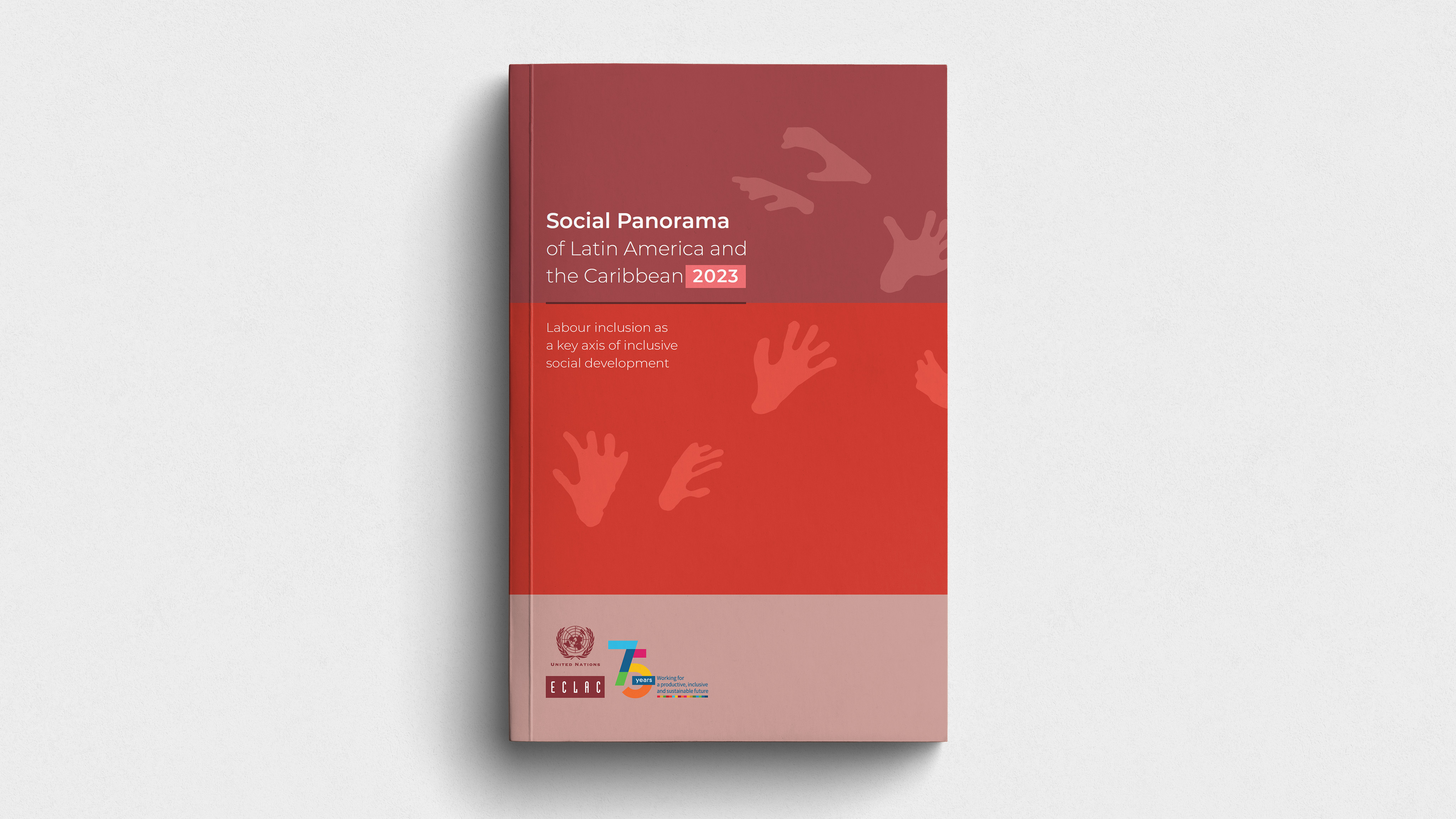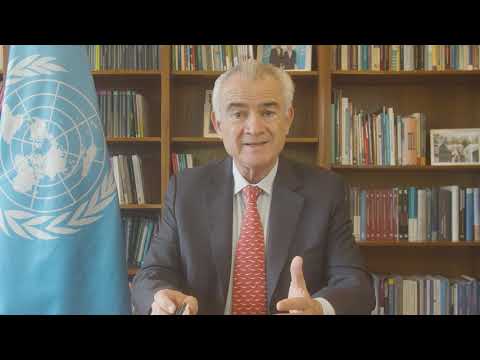Poverty in Latin America Returned to Pre-Pandemic Levels in 2022, ECLAC Reports with an Urgent Call for Progress on Labour Inclusion
Despite this improvement in the indicators, more than 180 million people in the region do not have enough income to meet their basic needs and 70 million of them lack the income needed to acquire a basic food basket, the Commission warns in its report Social Panorama of Latin America and the Caribbean 2023.

In 2022, the percentage of people living in poverty fell to 29% of Latin America’s population (181 million people), 1.2 percentage points lower than before the COVID-19 pandemic began, while extreme poverty declined to 11.2% of the region’s population (70 million people), remaining at levels similar to 2019, the Economic Commission for Latin America and the Caribbean (ECLAC) reported today.
The report Social Panorama of Latin America and the Caribbean 2023: Labour inclusion as a key axis of inclusive social development – presented by ECLAC’s Executive Secretary, José Manuel Salazar-Xirinachs – also points up the reduction of income inequality as measured by the Gini index, along with the recovery in employment.
Nonetheless, ECLAC warns that the GDP growth rate forecast for 2023 in Latin America and the Caribbean (1.7%), which is significantly lower than the 3.8% seen in 2022 and could even slow to 1.5% in 2024, means that further improvements to poverty in the region are not anticipated for this year.
“Although we point to the reduction of poverty in 2022, there is no reason to celebrate. More than 180 million people in our region do not have enough income to meet their basic needs, and 70 million of them lack the income needed to acquire a basic food basket. In total, nearly one-third of the region’s population is living in poverty, a percentage that rises to 42.5% in the case of children and adolescents – a reality we cannot tolerate. The incidence of poverty is also higher among women, the indigenous population and people who live in rural areas,” indicated José Manuel Salazar-Xirinachs, ECLAC’s highest authority.
According to the report, job creation between 2014 and 2023 hit its lowest level since the 1950s. In 2020, during the pandemic, job creation fell by 8.2%, marking the only decline recorded in the last 70 years.
Among the 292 million people employed in the region, 1 out of every 2 has an informal job, nearly one-fifth lives in poverty, 4 in 10 have labour income below the minimum wage, and half does not contribute to pension systems, according to the Social Panorama of Latin America and the Caribbean 2023.
Although improvements can be seen in certain labour market dimensions between 2020 and 2022, the region is living through a slow-motion crisis in terms of labour inclusion, which is understood to encompass not just labour market insertion but also the conditions in which employment is accessed in the labour market, the United Nations regional organization explains.
This means that while entering the paid labour market is vital, it is not enough to achieve labour inclusion. Access to productive, well-paid jobs with access to social protection is needed, particularly for women and young people, ECLAC underscores.
In 2022, 54.2 million households in the region (39% of the total) depended exclusively on informal employment. Furthermore, the majority of children (under 15 years of age) and people 65 years or older live in households that are either completely informal or mixed (61.2%).
And while income inequality fell in 2022 to levels below those recorded in 2019, it continues to be very high, the study indicates.
In Latin America, the income of the highest-income decile (decile 10) is equivalent to 21 times more than that of the lowest-income decile (decile 10). In 2021, the wealth of 105 people alone represented nearly 9% of regional GDP, ECLAC emphasizes.
“The region remains caught in a double structural trap of low growth and high levels of poverty and inequality. Countries must move from labour market insertion to labour inclusion, which is the pillar of inclusive social development. But labour inclusion requires high and sustained economic growth. It is not possible to create a better work future without creating a better production future, and vice versa,” José Manuel Salazar-Xirinachs stressed during the presentation of the document, pointing to the close relationship between countries’ productive development policies, labour policies and social protection policies.
The report presented today confirms that historical gender gaps in labour markets continue to persist.
While the labour participation rate of men was 74.5% in 2022, the rate for women was just 51.9% (a gap of 22.6 percentage points). Women also have higher unemployment rates (8.6% compared with 5.8% for men in 2022).
The main barrier to women’s labour inclusion is the burden of care work, ECLAC says: the participation rate for women in households with children (61.6%) is below that of households without children (73.5%).
Domestic work, ECLAC notes, represents one of the main sources of employment for women in Latin America, but the average income earned by domestic workers is half of what is earned on average by employed women as a whole.
In addition, the study indicates that migrants have increased their presence in the region’s labour markets, contributing to the economy and society in destination countries. However, they tend to experience more difficulties for achieving labour inclusion, due to their more precarious and unstable labour conditions, which are worsened by the conditions associated with irregularity in migration status.
Finally, the Social Panorama 2023 indicates that central government social spending increased in response to the pandemic, peaking in 2020, but it has been declining since. In 2022, there was much heterogeneity across countries and subregions: three countries surpass 14.5% of GDP, while five others are below 10% of GDP. The challenge is to maintain growth in public social spending to give financial sustainability to policies for labour inclusion, the organization concludes.
Related content
Social Panorama of Latin America and the Caribbean 2023: Labour inclusion as a key axis of inclusive social development
Presentation by ECLAC's Executive Secretary, José Manuel Salazar-Xirinachs.

Panorama Social de América Latina y el Caribe 2023 - Mensaje del Secretario Ejecutivo de la CEPAL
En este mensaje, el Secretario Ejecutivo de la CEPAL, José Manuel Salazar-Xirinachs, presenta los principales resultados del informe anual de la institución "Panorama Social de América Latina y el…
Related link(s)
Country(ies)
- Latin America and the Caribbean
Contact
Public Information Unit
- prensa@cepal.org
- (56 2) 2210 2040
